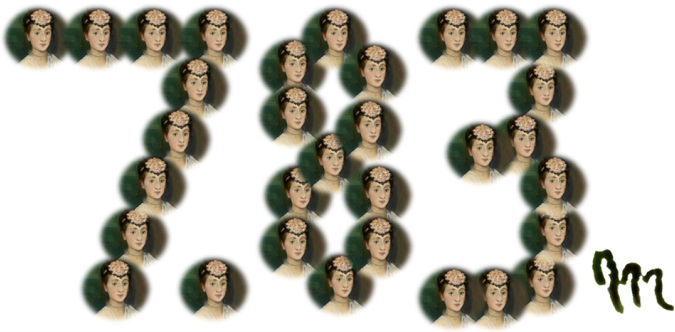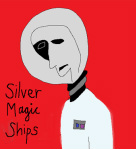Once-upon-a-time export bars were justified on the grounds of ensuring that a work of art was being "saved for the nation". Interestingly, the new owner of the portrait - the Ashmolean Museum in Oxford - has rephrased this dubious claim. Manet's work, we are assured, has been "saved for the public".
The museum is obviously keen to justify the expenditure on this portrait of a foreign person by a foreign artist.
The purchase will, we are told, "completely transform" the Ashmolean, helping to turn it into "a world-leading centre for the study of Impressionist and post Impressionist art."
Portrait of Mademoiselle Claus is, in other words, a commodity used as a means of competing with rival collections, both in the UK and abroad. However, the Ashmolean is only able to take part in the competition because this particular item of trade has not been allowed to reach its true "value". This is due to the fact that "aesthetic importance" and national pride are deemed, in this instance, to outweigh considerations of mere money. The result being that the Ashmolean was able to purchase the item in question for only 27% of its market value.
The artwork's worth on the open market "net of VAT" was £28,350,000. The enormous difference between this and the £7.83m paid by the Ashmolean represents a huge loss in taxation - at a time when Britain's economy is in a parlous state and when the government (it claims) is doing its utmost to tackle tax avoidance.
Mindful of this, the Ashmolean seeks to reassure us that it is "planning a full programme of educational activities, family workshops, and public events inspired by the painting."
But consider for a moment how many "educational activities" could be implemented for, say, £20 million (the difference between the "true" value of the artwork and the sum paid by the Ashmolean).
Fortunately we don't need to worry about this because money is very rarely talked about in our hallowed museums.
Manet's Portrait of Mademoiselle Claus is destined to merge seamlessly into the Ashmolean collection and be toured around various temporary exhibitions. A little label will list the charitable organisations and anonymous givers responsible for "saving it for the public". Yet the true cost of the commodity will be omitted.
Manet's money should not, however, be ignored.
Nor should one further, pressing issue. Just because Manet's painting is now "publicly" owned does not necessarily mean it will never again become a financial commodity. Alterations to the Museums Association's code of ethics mean that public museums in the UK are now able to "ethically" sell objects from their collections, albeit in exceptional circumstances.
This means that the same inventive logic and sleight of hand deployed to acquire Portrait of Mademoiselle Claus could be equally used to justify its future sale. As long, of course, that the money raised can be shown to be "for the benefit of the museum’s collection."
Where, however, will all this end? Might the change to the code of ethics be the first step towards the situation in the United States? San Francisco Museum of Modern Art, for example, recently sold Bridle Path by the American artist, Edward Hopper in order to "benefit acquisitions." Perhaps one day the Ashmolean could do the same with the support of the Museums Association and the connivance of the British government? The museum would go on to make a tidy profit from its Manet - some of which could then be used to support future "educational activities". And so it goes on...
Money might well be a taboo subject in museums. But the issues raised by Édouard Manet's Portrait of Mademoiselle Claus should serve to remind us that museums have their own carefully constructed economy: one that is just as inventive and artful as the "real" economy with its clever strategies of quantitative easing dreamt up by bands of unethical bankers.
With this in mind, should the Ashmolean have been allowed to buy the painting under such circumstances?
The answer, I think, is no.
Instead, the British government should take a leaf out of the Museums Association's code of ethics. It ought to have allowed the export, on the condition that all monies raised in taxation from the sale were ring-fenced and used to fund "educational activities" in our museums. This would go some way to offsetting recent reductions in museum funding - with outreach and education programmes suffering disproportionately as a consequence.
This outcome would be far more ethical and more effective than the spurious tokenism used by the Ashmolean to disguise its glee at acquiring a work of art that only a fraction of the public will see or have any interest in.
___________
Supplemental
09/08/2012
"Donations help keep Manet in UK". So reads the title of an article about this matter in today's Financial Times.(1) The newspaper chooses to foreground the generosity of "1,048 people who donated sums which ranged from £1.50 to £10,000". Framing the story in this manner is a carefully considered ploy. It seeks to underline the sense of universal public support and popular approval for this deal.
These contributions are certainly laudable. But they pale into insignificance given that the bulk of the £7.83m came from "the Heritage Lottery Fund, which contributed £5.9m, and the Art Fund, which gave £850,000". The support of these official bodies plus the above-mentioned loss in tax revenue mean that the Ashmolean's latest acquisition must indeed have cost the state at least £20m.
This is, indeed, a conservative estimate. It is reported that 80% of the painting's value would have been levied in tax had it been sold on the open market.(2) It is the case, therefore, that the seller not only avoided a large tax bill; he or she also accrued more money by selling it to a UK museum for less than £8m as opposed to securing over £28m from a foreign buyer.
So, in a way, the FT is right: a very large donation has indeed kept Manet in the UK.
____
Notes
(1) Hannah Kuchler, "Donations help keep Manet in UK", Financial Times, 09/08/2012, http://www.ft.com/cms/s/2/4168b256-e174-11e1-92f5-00144feab49a.html.
(2) Maev Kennedy, "Ashmolean buys Manet's Mademoiselle Claus after raising £7.8m", The Guardian, 08/08/2012, http://www.guardian.co.uk/culture/2012/aug/08/ashmolean-buys-manet-mademoiselle-claus.
_____________
Other references
Anon (2011) "Culture Minister defers export of stunning portrait by Edouard Manet", Department for Culture,
Media and Sport, 120/11, 08/12, http://www.culture.gov.uk/news/media_releases/8686.aspx
Anon (c.2011) "Last chance to keep Manet’s Portrait of Mademoiselle Claus in the UK", Department for Culture,
Media and Sport, undated, accessed 08/09/2012 at, http://www.culture.gov.uk/news/news_stories/8685.aspx
Anon (c.2012) "Manet portrait saved for the public", undated, accessed 08/09/2012 at,
http://www.ashmolean.org/manet/portrait/
Atkinson, Rebecca (2012) "Ashmolean acquires threatened Manet portrait for £7.83m", Museums Association, 08/08,
http://www.museumsassociation.org/museums-journal/news/08082012-ashmolean-purchases-manet-portrait
Burch, Stuart (2012a) "Biting the hand that feeds", 22/03,
http://www.stuartburch.com/1/post/2012/03/biting-the-hand-that-feeds.html
Burch, Stuart (2012b) "I scream, you scream, we all scream for The Scream", 20/03,
http://www.stuartburch.com/1/post/2012/04/i-scream-you-scream-we-all-scream-for-the-scream.html
Burch, Stuart (2012c) "A Pearl of Dream Realm economics", 16/07,
http://www.stuartburch.com/1/post/2012/07/a-pearl-of-dream-realm-economics.html
Holmes, Charlotte (n.d.) "Sale of collections", Museums Association, accessed 08/09/2012 at,
http://www.museumsassociation.org/collections/sale-of-collections







